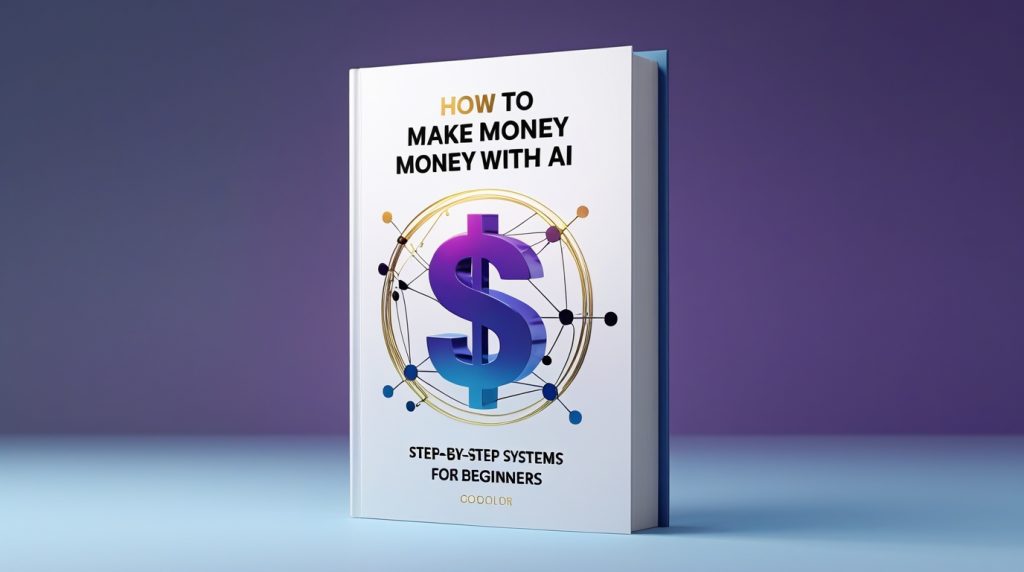| Vendor: | Larry Kearney |
| Product: | (PLR) How To Make Money With AI |
| Launch Date: | 2025-Dec-14 |
| Launch Time: | 9:00 EST |
| Front-End Price: | 1.00 |
| Commission: | 100% |
| JV Page: | TBA |
| Affiliate Network: | WarriorPlus |
| Niche: |
This ebook is a practical playbook for beginners who want to turn AI into income without coding or big budgets. It starts by reframing AI as a power tool that multiplies useful work rather than a magic cash machine. Your edge isn’t owning fancy software; it’s delivering outcomes—clearer copy, faster research, better content—more reliably than alternatives. The fastest path is to pick one problem a real buyer already cares about, ship a tiny paid win, and improve from feedback.
You’re given a lean tool stack to keep costs near zero: a strong AI chatbot, a docs app, a spreadsheet, a simple design tool, a screen recorder, and a password manager. The emphasis is on organization and portability—tidy folders, consistent naming, and exports to common formats—so you never get locked in. The rule is simple: only upgrade when the numbers prove a tool saves time or makes more money.
A core skill is prompt craft. The book teaches a PASTA checklist—Purpose, Audience, Style, Tone, and Assets—so the model knows exactly what to produce. You’re encouraged to build a prompt library, iterate in short rounds (plan → draft → critique → refine), ask for assumptions and missing info, and require citations when facts matter. Over time, named templates become your speed advantage.
Research is turned into a repeatable loop. Start by asking AI for search terms, subtopic maps, and decision criteria. Summarize credible sources, compare agreements and contradictions, and track each claim with links and dates. For product work, build comparison tables with must-haves and deal breakers; for audience work, compile pain points and objections. Verification is non-negotiable: the model brainstorms; you validate.
When creating content, begin small—posts, emails, and scripts—so you can publish often and learn fast. Use a simple structure (hook, problem, promise, proof, next step). Run content sprints to produce multiple angles at once, schedule releases, and repurpose winners into videos or longer guides. A basic spreadsheet tracks titles, dates, channels, views, clicks, and conversions so decisions come from data, not hunches.
The freelancing chapters convert skills into paid offers. You’ll package tightly scoped services—SEO briefs, product descriptions, social captions, refreshes, or email sequences—into Starter/Standard/Pro tiers with clear inclusions, exclusions, timelines, and revision rules. Delivery checklists protect quality when you get busy. Pricing is anchored to outcomes and reliability, with small, steady increases as testimonials grow.
To land clients quickly, the book shows how to build a niche portfolio in a weekend. Create three realistic samples for one audience (e.g., a landing page rewrite, a promo email, and a short video script for a local business). Host everything on a simple one-page site with your promise, packages, and a contact button. Then use concise outreach that leads with value: reference their page, offer a micro-improvement or mockup, and propose one easy next step. Follow up on a schedule and track reply rates to refine what works.
Beyond services, you’ll learn beginner-friendly monetization paths. For affiliate marketing, choose a specific problem with active search intent and publish helpful decision pages—transparent reviews, comparisons, and quick-starts—with screenshots and disclosures. Track clicks, conversions, refunds, and earnings per visitor; prune weak offers and improve winners. For niche sites, cover a tight cluster of topics deeply, write for one search intent per page, optimize basics (speed, headings, alt text), and update winners quarterly. Build an email list with a small, fast win (template or checklist), write a three-email welcome, send weekly value, and clean inactives to protect deliverability.
Digital products are kept modest and fast: checklists, prompt packs, swipe files, and simple templates. Validate interest with a free sample or waitlist, launch with a short sales page and clear examples, and fold common support questions back into the product. Video creation is simplified: AI drafts scripts and hooks; you batch scripting, recording, editing, and repurposing; and you improve using early-retention metrics.
Automation gets thoughtful guardrails. Start with low-risk steps (renaming files, first-draft generation, posting updates), add one automation at a time, and document processes so failures are transparent. If a step is fragile or high-stakes, keep it manual until you can add reviews or alerts. Ethics and data care are woven throughout: respect consent, disclose affiliates, verify claims, credit sources, and keep a changelog of prompts and decisions. Long-term income depends on trust.
Quality control is quick and systematic: a pre-publish checklist (headline, summary, facts, links, screenshots, accessibility, next step), a “red-team” pass where you ask AI to poke holes, a read-aloud sweep to catch awkward sentences, and a final scan for scannability. Ship when it meets the bar; then iterate with feedback rather than chasing perfect.
The book then maps the financial ramp from first dollar to first $1,000. Focus on one repeatable offer for a narrow audience; track lead source, close rate, delivery time, revisions, and profit. Reinvest in assets that speed delivery—better templates, style guides, or a lightweight CMS—and run monthly reviews to choose the next ten actions. Scaling happens by building SOPs, standardizing assets (prompts, templates, checklists), and hiring only where documented processes already exist. Keep responsibilities narrow, expand after handoffs are smooth, and protect the brand promise: useful work, on time, clearly communicated.
Invite your friends to this launch on Facebook:




